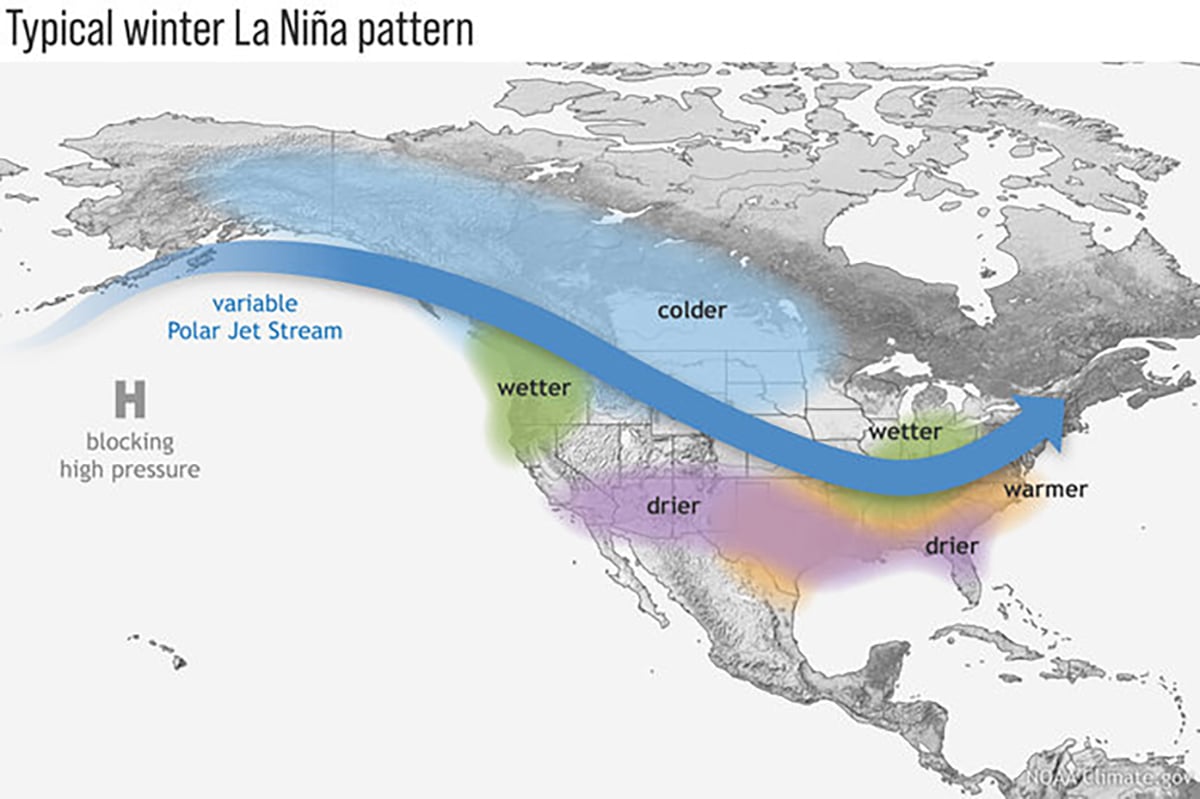OTTAWA (Reuters) — The Canadian economy expanded at an annualized rate of one percent in the fourth quarter, exceeding expectations, which should ease interest rate-cutting pressure on the central bank.
Fourth-quarter gross domestic product was higher than the Bank of Canada’s expectation for zero growth and analysts’ median forecast for an expansion of 0.8 percent growth. January GDP likely gained 0.4 percent from December, Statistics Canada said.
“Today’s results, while mixed, would send a signal that there’s no urgency to cut rates,” said Doug Porter, chief economist at BMO Capital Markets.
Read Also

Weather factors to watch this winter
There are currently three main factors that could be a driving force behind the type of weather we may see this winter. The first is La Nina, which is currently in a weak stage.
“It’s not as if the economy is sinking…. It’s just very slowly but surely moving ahead.”
The Bank of Canada has kept its key overnight rate at a 22-year high of five percent for the past four meetings as it strives to root out underlying inflation driven by shelter costs, food prices and wages.
Canada’s economy did better than G7 counterparts Japan and the United Kingdom, which slipped into recession at the end of last year.
Month-over-month, real GDP was essentially unchanged in December, missing a 0.2 percent growth forecast, Statistics Canada said. Quarterly growth was fuelled by a rise in exports as imports declined, the agency said, adding that a decline in business investment was a moderating factor.
Final domestic demand, composed of expenditures on final consumption and gross fixed capital formation, edged down 0.2 percent in the fourth quarter, and outside of 2020, real GDP in 2023 rose at its slowest pace since 2016.
“Growth appears to have been driven largely by an easing of previous supply constraints … rather than necessarily an improvement in domestic demand,” said Andrew Grantham, economist with CIBC.
The current GDP data doesn’t change his forecast for a first interest rate cut in June, he said.
While high rates have helped cool inflation from 8.1 percent in June 2022 to 2.9 percent in January, it has gnawed at growth, building pressure on the central bank to start easing rates.
In its January monetary policy report, the Bank of Canada had forecast economic growth to stall in the fourth quarter and grow by an annualized 0.5 percent in the first quarter. It expects this year’s growth to be 0.8 percent.
Since the bank’s last rate announcement, data has been mixed with job growth exceeding expectations in January and inflation cooling faster than expected. At 2.9 percent, inflation is still running hotter than the bank’s two percent target.
In an advance estimate for January, Statistics Canada said increases in educational services and health care and social assistance were partially offset by decreases in mining, quarrying, oil and gas extraction and transportation and warehousing sectors.















